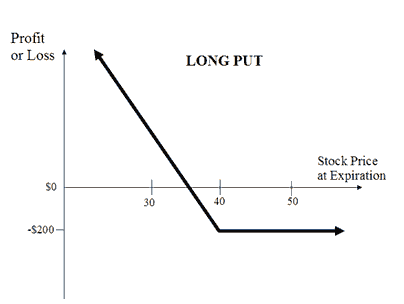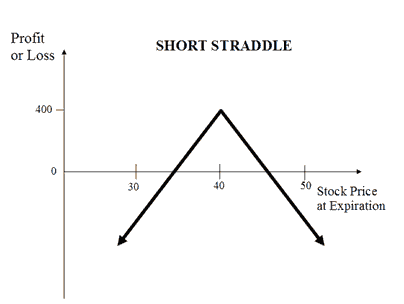 Zerodha (Trading Account)
Zerodha (Trading Account)
FREE Equity Delivery and MF
Flat ₹20/trade Intra-day/F&O
 Zerodha (Trading Account)
Zerodha (Trading Account)
FREE Equity Delivery and MF
Flat ₹20/trade Intra-day/F&O

|
|
Compare Long Put and Short Straddle (Sell Straddle or Naked Straddle) options trading strategies. Find similarities and differences between Long Put and Short Straddle (Sell Straddle or Naked Straddle) strategies. Find the best options trading strategy for your trading needs.
| Long Put | Short Straddle (Sell Straddle or Naked Straddle) | |
|---|---|---|
 |
 |
|
| About Strategy | A Long Put strategy is a basic strategy with the Bearish market view. Long Put is the opposite of Long Call. Here you are trying to take a position to benefit from the fall in the price of the underlying asset. The risk is limited to premium while rewards are unlimited. Long put strategy is similar to short selling a stock. This strategy has many advantages over short selling. This includes the maximum risk is the premium paid and lower investment. The challenge with this strategy is that options have an expiry, unlike stocks which you can hold as long as you want. Let's assume you are bearish on NIFTY and expects its price to fall. You can deploy a Long Put strategy by buying an ATM PUT Option of NIFTY. If the price of NIFTY share... Read More | The Short Straddle (or Sell Straddle or naked Straddle) is a neutral options strategy. This strategy involves simultaneously selling a call and a put option of the same underlying asset, same strike price and same expire date. A Short Straddle strategy is used in case of little volatility market scenarios wherein you expect none or very little movement in the price of the underlying. Such scenarios arise when there is no major news expected until expire. This is a limited profit and unlimited loss strategy. The maximum profit earned when, on expire date, the underlying asset is trading at the strike price at which the options are sold. The maximum loss is unlimited and occurs when underlying asset price moves sharply in upward or down... Read More |
| Market View | Bearish | Neutral |
| Strategy Level | Beginners | Advance |
| Options Type | Put | Call + Put |
| Number of Positions | 1 | 2 |
| Risk Profile | Limited | Unlimited |
| Reward Profile | Unlimited | Limited |
| Breakeven Point | Strike Price of Long Put - Premium Paid | 2 Breakeven Points |
| Long Put | Short Straddle (Sell Straddle or Naked Straddle) | |
|---|---|---|
| When to use? | A long put option strategy works well when you're expecting the underlying asset to sharply decline or be volatile in near future. |
This strategy is to be used when you expect a flat market in the coming days with very less movement in the prices of underlying asset. |
| Market View | Bearish When you are expecting a drop in the price of the underlying and rise in the volatility. |
Neutral When trader don't expect much movement in its price in near future. |
| Action |
Let's assume you're Bearish on Nifty currently trading at 10,400. You expect it to fall to 10,000 level. You buy a Put option with a strike price 10,000. If the Nifty goes below 10,000, you will make a profit on exercising the option. In case the Nifty rises contrary to expectation, you will incur a maximum loss of the premium. |
|
| Breakeven Point | Strike Price of Long Put - Premium Paid The breakeven is achieved when the strike price of the Put Option is equal to the premium paid. |
2 Breakeven Points There are 2 break even points in this strategy. The upper break even is hit when the underlying price is equal to the total of strike price of short call and net premium paid. The lower break even is hit when the underlying price is equal to the difference between strike price of short Put and net premium paid. Break-even points: Lower Breakeven = Strike Price of Put - Net Premium Upper breakeven = Strike Price of Call+ Net Premium |
| Long Put | Short Straddle (Sell Straddle or Naked Straddle) | |
|---|---|---|
| Risks | Limited The risk for this strategy is limited to the premium paid for the Put Option. Maximum loss will happen when price of underlying is greater than strike price of the Put option. |
Unlimited There is a possibility of unlimited loss in the short straddle strategy. The loss occurs when the price of the underlying significantly moves upwards and downwards. Loss = Price of Underlying - Strike Price of Short Call - Net Premium Received Or Loss= Strike Price of Short Put - Price of Underlying - Net Premium Received |
| Rewards | Unlimited This strategy has the potential to earn unlimited profit. The profit will depend on how low the price of the underlying drops. |
Limited Maximum profit is limited to the net premium received. The profit is achieved when the price of the underlying is equal to either strike price of short Call or Put. |
| Maximum Profit Scenario | Underlying goes down and Option exercised
|
Both Option not exercised |
| Maximum Loss Scenario | Underlying goes up and Option not exercised
|
One Option exercised |
| Long Put | Short Straddle (Sell Straddle or Naked Straddle) | |
|---|---|---|
| Advantages | Unlimited profit potential with risk only limited to loss of premium. |
It allows you to benefit from double time decay and earn profit in a less volatile scenario. |
| Disadvantage | You may incur 100% loss in premium if the underlying price rises. |
Unlimited losses if the price of the underlying move significantly in either direction. |
| Simillar Strategies | Protective Call, Short Put, Long Straddle | Short Strangle, Long Straddle |

Add a public comment...

FREE Intraday Trading (Eq, F&O)
Flat ₹20 Per Trade in F&O
|
|